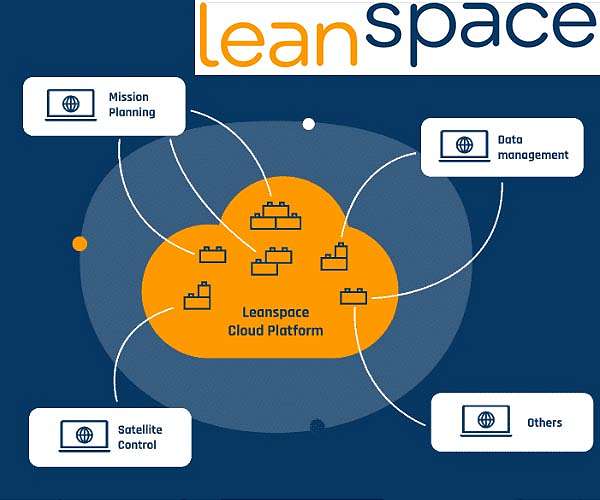
Leanspace and Valispace team up to demonstrate the power of Digital Continuity in space mission management (Image Credit: Space Daily)
Numerous software tools are typically required throughout a space mission; from the mission conceptualization and satellite design, to testing the hardware, to running operations. Still today, this technology stack consists of independent systems that don’t talk to each other, requiring manual movement of data, limiting automation and forcing engineering teams to work with different data sets.
In the current context of commercialization of the space industry, where every organization strives to become more agile, reduce costs and increase efficiency, this is an ever increasing problem. The solution is digital continuity.
What is Digital Continuity?
“Digital Continuity is the ability to move data across phases, tools and teams in the mission life-cycle” said Stuart Gill, Product Manager at Leanspace.
Digital continuity breaks down information silos by eliminating the interfaces between various tools. It allows faster design iterations by expediting feedback cycles, and enables better collaboration between teams by ensuring everyone is working on the most up-to-date information.
For startups, this means having scalable systems that seamlessly grow as they do, and future-proofing their business, for established organizations it means increasing efficiency, reducing costs and enabling agility.
The live demonstration showed the power of digital continuity applied to a common space use case.
During the live demonstration, we followed a fictional Earth Observation company that had just finished designing its next generation of satellites using Valispace. As their design environment is connected to their operational environment built in Leanspace, they were able to move all design data across both tools, in a quick, reliable and cost-efficient manner. Once there, they just needed to configure their assets and add any necessary operational parameters.
What normally would take weeks of cumbersome manual work to redefine the same assets, properties and data structures all over again, was done in just a few clicks. The native integration assures a fast, reliable and lossless data transfer, protecting against human error.
Digital continuity can synchronize all tools throughout the design-test-operate life-cycle, enabling an exponential increase in space mission efficiency. Leanspace has been conceived with digital continuity at its core, allowing to connect all ground software systems – from satellite design, test bench operations, satellite control, mission planning or ground station networks.
Related Links
Leanspace
Space Technology News – Applications and Research
|
|
Tweet |
|
|
|
We need your help. The SpaceDaily news network continues to grow but revenues have never been harder to maintain. With the rise of Ad Blockers, and Facebook – our traditional revenue sources via quality network advertising continues to decline. And unlike so many other news sites, we don’t have a paywall – with those annoying usernames and passwords. Our news coverage takes time and effort to publish 365 days a year. If you find our news sites informative and useful then please consider becoming a regular supporter or for now make a one off contribution. |
||
|
SpaceDaily Monthly Supporter $5+ Billed Monthly
|
SpaceDaily Contributor $5 Billed Once
credit card or paypal |
|
Software-defined satellite enters commercial service
Paris (ESA) Aug 18, 2022
Europe’s first commercial satellite capable of being completely reprogrammed while in space is now in commercial use.
Satellite operator Eutelsat has sold six of its eight beams – used for data and mobile communications – to organisations including governments and other users. It is expected that the entire satellite capacity will be sold in the coming months.
The satellite – called Eutelsat Quantum – was launched on 30 July 2021 by an Ariane 5 from Europe’s spaceport in French Guiana.






